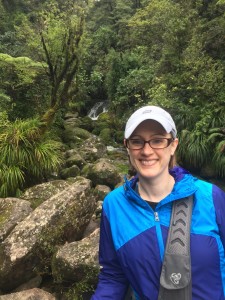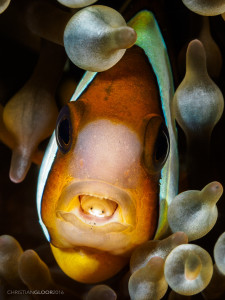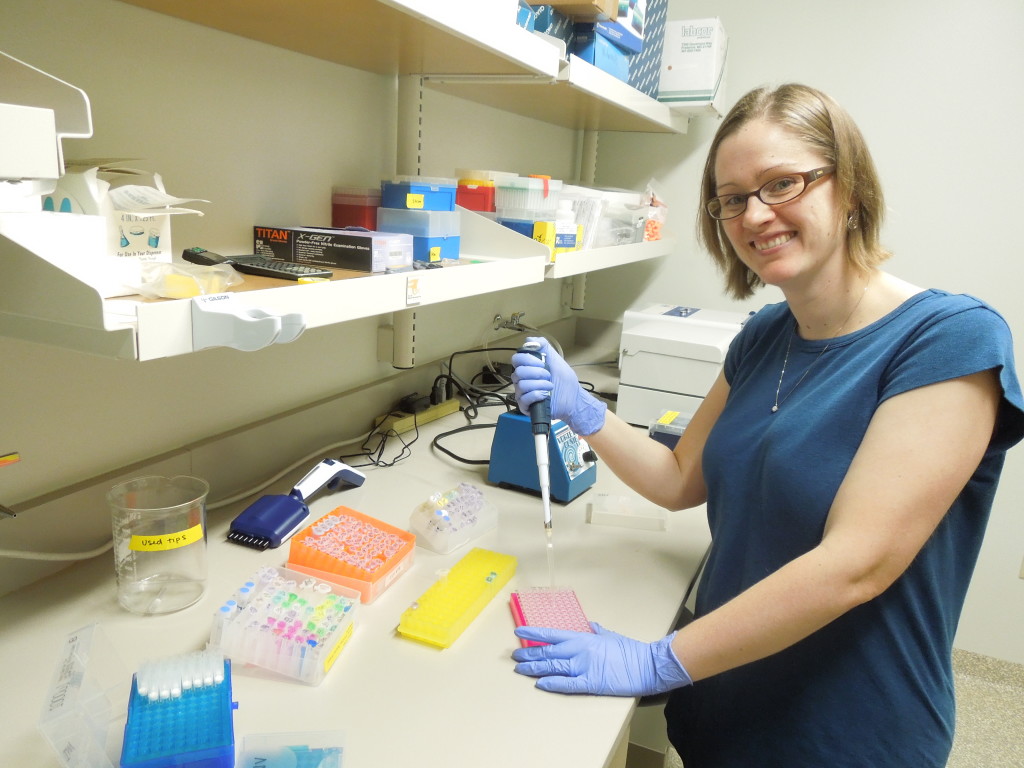by Kristen Minogue

Katrina Lohan in New Zealand’s Abel Tasman National Park. (Credit: Chris Lohan)
Weird truth: There are more parasites on Earth than non-parasites. Katrina Lohan would know, having spent over a decade studying them. After five years with the Smithsonian Environmental Research Center’s Marine Invasions Lab, Lohan is now in charge of launching the center’s new Marine Disease Ecology Lab. In this Q&A, meet some of the weirdest parasites she’s encountered and learn how DNA is helping her unlock their secrets.
This is the second of three profiles about the young scientists heading SERC’s newest labs. Edited for brevity and clarity.
What do you find most fascinating about parasites?
I really like it when stories are complicated. And adding parasites certainly complicates any story. But I’m also intrigued by the David and Goliath aspect of it, that parasites are super small, [often] overlooked, and most people don’t even think about them in terms of what role they play in ecosystems or what they could possibly be doing. Most people would sort of shrug off—oh, they’re probably not really that important. And yet, they’re extremely important. The more we learn about parasites, the more we realize that they control their hosts. They can actually completely change the behavior of their hosts.
How common is the parasitic lifestyle?
More common than free living. There are more parasitic organisms on the planet than there are free-living organisms.
By number of species or number of organisms?
Probably both, if you count bacteria and protists….When you consider that parasites have parasites, and that there are parasites of parasites of parasites, you’re getting to a level of diversity that is much higher than what we currently know.
What are your favorite parasites?

This unlucky clownfish had its tongue replaced by the parasite Cymothoa exigua. (Credit: Christian Gloor)
There is a parasite that replaces the tongue of fish. [One example is] in the Gulf of Mexico [Cymothoa exigua]. It actually eats away the tongue and replaces it, so when the fish opens its mouth, what you see is the parasite rather than the fish’s tongue. That I think is pretty crazy. But I think one of the parasites that I find particularly intriguing, though I don’t study it, is Toxoplasma [Toxoplasma gondii]…. It is the parasite that is the reason that pregnant women shouldn’t deal with cat litter, because if you are infected while pregnant, it’s capable of passing the placental barrier and can cause birth defects….
It will actually make mice, rather than turning away from cat smells, attracted to the smell of cat urine and actually seek out cats, which would then eat the mice, which then allows the parasite to finish its reproductive cycle inside the cats. And there’s some evidence that’s come out showing that humans who undergo repeated exposure—in people, it can’t finish its life cycle, but it will [lie dormant] in tissues—there’s been growing evidence that it will actually increase risk behavior in humans. The presence of the parasite increases risk taking in people, which is just a phenomenal thing to think about! You would think of yourself as being immune to a single-celled parasite changing your behavior, and yet, maybe not.

Katrina Lohan processes samples in SERC’s Ecological Genomics Core. (Credit: Kristen Minogue)
How is DNA helping you understand parasites?
The parasite I studied for my PhD looks like, in very nondescriptive terms, a circle with some circles inside of it. There’s really not much to it to be able to [generate] any sort of species-level description. Maybe not even a genus level. And unfortunately that’s true for a lot of small single-celled organisms. And there’s also a lot of parasites that have very different-looking life stages. So what they look like inside their host is not what they look like outside….Through the use of DNA, we now know that they’re not all different species.
Do you have any favorite or surprising discoveries?
I was fascinated by the diversity of parasites that we found in ballast water….and not just the diversity, but how frequently they came up in our samples. Some of these were in literally every single sample that we had.
Read More: Slime Nets & Other Microscopic Invaders Unmasked, Thanks to DNA
What projects are you most excited to work on in your new lab?
Most of the [oyster] parasites that we’ve been looking at like Perkinsus and Haplosporidium cause pretty severe disease in the Chesapeake Bay, but those same parasites in Panama did not really appear to greatly impact their hosts. So I’m really curious to find out why….
I’m also really interested in taking some of the ballast water work to the next level and looking at, okay if these parasites are in ballast water, what happens to them when they’re discharged? What’s their likelihood of surviving?
Clownfish photo by Christian Gloor, used via permission of Creative Commons license here.
Meet more of SERC’s new generation of lead scientists:
Q&A: Kim Komatsu, Ecosystem Conservation Ecologist
Q&A: Ian Davidson, Aquatic Inquirer

